Would you like to learn Japanese free of charge? We are giving away 30 hours of high-quality comprehensive Japanese audio lessons, together with a complete transcript.
If you are having a difficult time trying to learn Japanese, it’s understandable. For people who think in English, Japanese is a very difficult language to learn. Aside from the fact that written Japanese employs three different alphabets, the main reason that we have so much trouble when we try to learn Japanese is that Japanese grammar is fundamentally different from the grammar used in European languages.
On the positive side, Japanese sounds a lot like Spanish, and it’s relatively easy to pronounce. It contains nouns, verbs, adjectives and adverbs, and there are reasonably logical rules that tie these elements together. It’s a fascinating language, and naturally you should try to learn Japanese if you will be visiting Japan.
I’ve been studying this difficult language for over thirty years and have tried a number of courses, textbooks and study methods during that time. Based on my experiences, I’ve identified three strategies that can help you to learn Japanese more efficiently and effectively.
Strategy #1. If you use these Japanese Audio Lessons to learn Japanese, you will save valuable time.
It will take quite awhile for your English-thinking brain to start thinking in Japanese. You will need to spend hundreds of hours reviewing phrases and sentences in order to acquire a reasonably firm grasp of basic Japanese vocabulary and grammar. Where will you find the time for this study?
An excellent solution to the problem of insufficient time is to use Japanese audio lessons. Since audio lessons don’t require you to stare at a book or a screen, you can use them while you do other activities that you need to do anyway, like exercising and commuting. As a bonus, if you exercise more often while using them, audio lessons will help to keep you healthy.
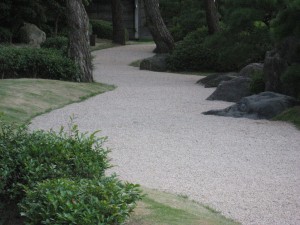
Strategy #2. Mnemonics can help you to learn Japanese.
Japanese words can be hard to remember. Kuukou means airport. Kyuukou means express train. Koukou means high school. Koukuu means aviation. How can you help your brain to remember all of these similar terms?
Mnemonics, or memory aids, are short sentences or phrases designed to help us learn new words, and they can make a big difference when you are trying to learn Japanese. Possible mnemonics for the four Japanese words mentioned above include “I shared my Kool-Aid with my co-worker at the airport,” “I wore my cute coat on the express train,” “Koko the gorilla visited my high school,” and “we ship Coke and Kool-Aid by aviation.”
It shouldn’t take very long for you to think of simple mnemonics for most Japanese terms. If you get stuck, try using a dictionary or a search engine. Since mnemonics are just trivial things that you will typically discard after using a new word about ten times, they don’t have to be perfect.
Strategy #3. “Active Recall” will smooth your path as you learn Japanese.
“Active Recall” means “learning by answering questions” or “flashcard learning,” and it’s a highly interactive, enjoyable and effective learning method which will benefit you as you learn Japanese. When you want to build strong memories, Active Recall has been shown to be more effective than “passive” study methods like reading textbooks or merely listening to audio recordings.
Many people use flashcards, especially electronic flashcards, when they are memorizing difficult terms. If you haven’t tried flashcards, you may not realize how much fun they are, or the extent to which they can reinforce your memory.
Paper and electronic flashcards use written questions and answers. In contrast, these Japanese Audio Lessons can be thought of as “audio flashcards.” They consist of audio questions in English followed by audio answers in Japanese.
If you want to learn to read the Japanese language, check out our “Learn to Read in Japanese” books.
Of course, an important part of learning Japanese is learning to read the language. We have prepared four Japanese Readers, Learn to Read in Japanese, Volumes 1 – 4, which are also based on the Active Recall learning method and which contain thousands of sentences for reading practice.
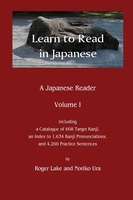
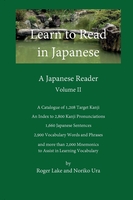
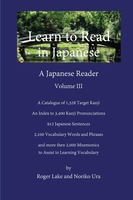
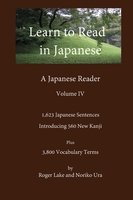
In these books, the “questions” are written as Japanese sentences on the left side of each page, and students do their best to translate them into English. The correct answers are shown on the right side of each page.
The first three Japanese Readers that are shown above include Kanji catalogues which describe the kanji that have been introduced up to that point in the curriculum: 608 kanji in the first book, a total of 1,208 in the second book and a total of 1,528 in the third book. These descriptions include each kanji’s pronunciations, meanings, examples of words that employ the kanji, retrieval cues (or mnemonics) for each of its pronunciations, and comparisons between it and other kanji. The books are efficient tools for the memorization and retrieval of kanji, allowing you to start Japanese reading practice as quickly as possible.
When we assembled the fourth Japanese Reader, shown above, we found that there was insufficient space to include the kanji catalogue, which had grown to include information covering 2,088 characters.
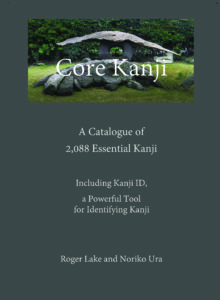
Therefore, we published this fourth Kanji Catalogue as a separate volume titled Core Kanji, A Catalogue of 2,088 Kanji. This book is designed to be used with all of the Japanese Readers, and it also serves as a stand-alone reference work that allows you to look up essential information about any of the characters.
There are three ways to look up the kanji. First, you can use the characters’ pronunciations, which can be determined by looking at the romaji that is adjacent to the Japanese text in the four Readers. Second, you can use the characters’ reference numbers, which are used when kanji are introduced in the Readers. Finally, more advanced students can look up kanji in the Core Kanji catalogue by looking up the characters’ salient traits in our Kanji Trait Index, a technique that we explain on our Kanji ID page.
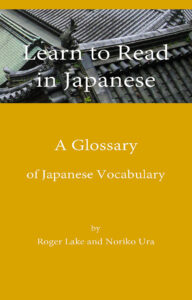
We have also compiled this Glossary of 9,700 Japanese terms that are used in the four Japanese Readers.
In addition to the six books just mentioned, we have assembled four books of Kanji Memorization Drills. Version One of the Drills reinforces your knowledge of the 608 kanji taught in Volume 1 of the Readers, Version Two of the Drills covers the 1,208 kanji taught in Volume 2 of the Readers, and so forth.
You can read more about our books on the How to Read Japanese page on this site.
These free Japanese Audio Lessons will help you to learn Japanese efficiently.
More than a dozen years ago, after completing a third round of Japanese audio lessons from various teachers, I wanted to find another course that would allow me to continue to learn Japanese. Not finding anything suitable, I started working on my own interactive Japanese audio lessons with the help of my wife Noriko, who is a native of Kyushu in Japan.
These Japanese audio lessons consist of sentences or phrases spoken in English, followed by answers spoken in Japanese. After listening to a question in English, a student pauses playback and thinks about how to translate the question. When the student is ready, he or she says the translation aloud and then resumes playback to hear the correct answer in Japanese.
The Japanese audio lessons come with a complete transcript, which you can print and carry along as you learn Japanese free of charge. The transcript includes both Japanese text and romaji, and it is completely customizable. If you think of new mnemonics while you are using these lessons, you may add them to the transcript for future use.
As you use these lessons during exercise periods and while you commute, you will soon begin to understand Japanese grammar and vocabulary at a basic level. If you refer to the transcript as you study, you will find answers to many common questions about the Japanese language.
Next, read A Comparison of Three Japanese Language Courses.
Or look at some of the other pages on this site:
Learn to Read Japanese, Continued
Efficient Reading Practice on a Computer
The History of these Japanese Lessons
Recommended Japanese Study Methods
…………………………………………………………………………………………………
If you would like to leave a public comment, please use the “Leave a Reply” box at the bottom of the Comments page. To contact us privately, please use the Contact Form on the Contact page, or send us an email at administrator@japaneseaudiolessons.com.